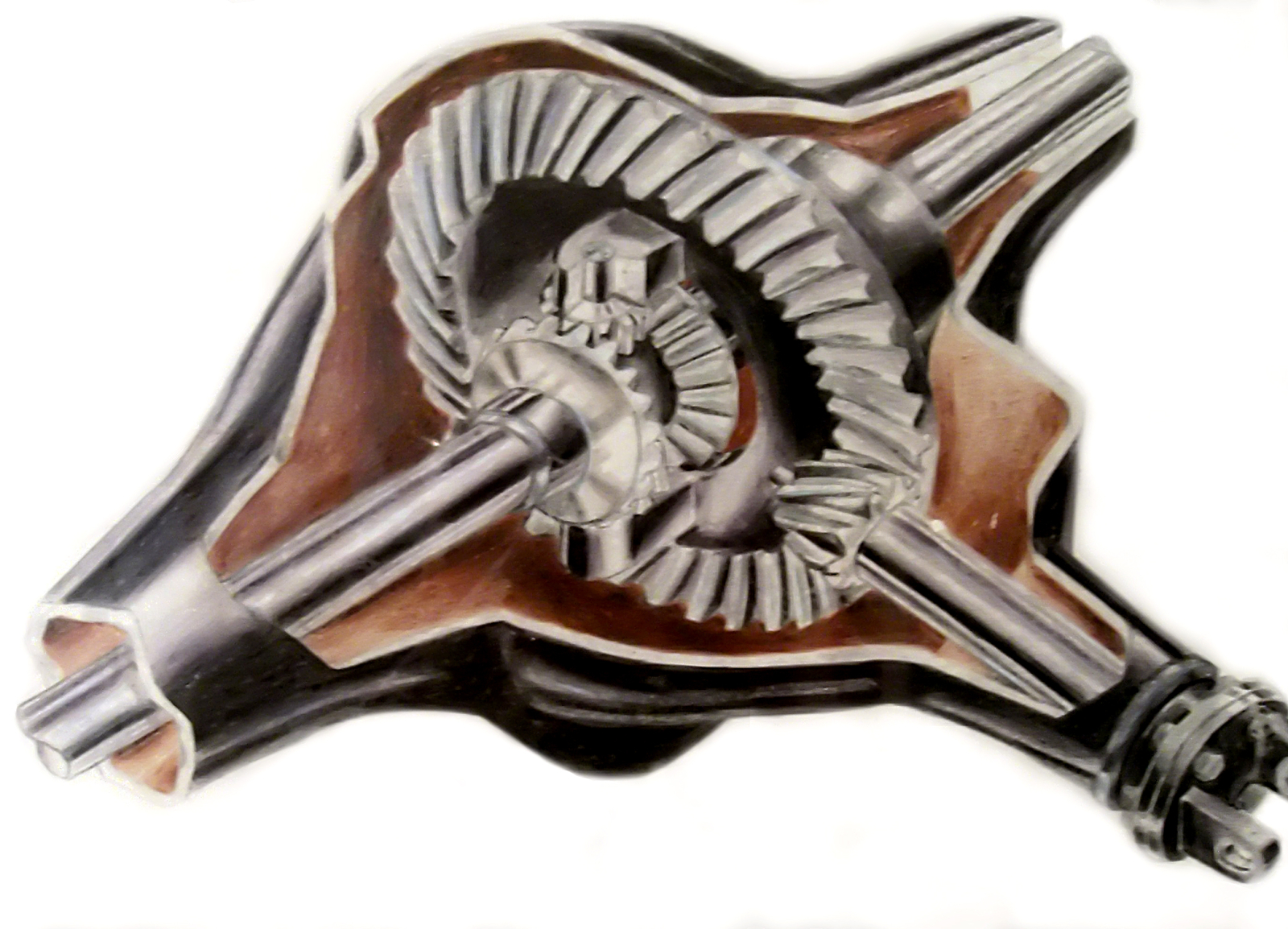The Physical Shadow of an Idea
Today, the shadow of an idea. The University of Houston presents this series about the machines that make our civilization run and the people whose ingenuity created them.
So I went to sleep, mentally reorganizing a bookshelf. Next day, I actually did the job. The shelf was much improved. But maybe less perfect than it'd been in my mind's eye. So what'd happened here? Here were two rearranged shelves. The original, in my mind. And the actual shelf. The actual shelf was a physical shadow of an idea -- projected into the real world.
That's the thing about inventions. What we actually build is just a tangible shadow of the idea -- a version of the idea out there where others can see it. And seeing some machine, without seeing at least some of the idea -- well, that's like trying to know a person when we've seen only her shadow.

The athleticism of the Idea, and its Shadow.
(Photo by J. H. Lienhard)
Take the automobile: Here's an assembly of so many ideas -- a countless set of such shadows. So consider just one of those ideas. Think about our car turning right:
When it does, the left rear wheel traces a big outer circle. The right rear wheel traces a much smaller circle. The left wheel turns more times than the right wheel. That's no problem in a carriage, where wheels rotate independently on a common axle. But our car's engine drives its rear axle with both wheels fixed to it. How on earth can we drive the wheels at different speeds?
Countless inventors have faced that problem over millennia. After all, cars aren't the only machines with this problem. Twenty-three hundred years ago, the maker of the Greek Antikythera Mechanism faced the same problem. Others dealt with it in clocks. But, ever since the earliest cars, we've needed a solution. So what mental gymnastics solved that problem?
The engine now drives a gearbox in the middle of the axle. A pair of bevel gears lets each wheel rotate at its own speed -- with their average speed matching the drive speed. We call that gearbox a differential gear. It's a fiendishly clever idea.
Differential Gear (Image courtesy of Wikimedia Commons)
I'll post pictures online, so you can see how it works -- so you can enter the inventor's mind. Meanwhile I drive the twisty city streets, giving no thought to bevel gears. No wonder -- our cars carry the physical shadows of countless such ideas -- innumerable metal shadows of mental pictures. That might sound like sophistry. But here's where the rubber meets the road:
If you and I hope to function creatively, we must reach inside the heads of inventors. It's one thing to give passive assent to all these shadows of human thought. But you and I will never actually invent until we can share in the substance of the Eureka moment -- the moment that gave birth to an invention.
Mental construction is the wellspring of every invention that serves us. So, let us learn to engage it -- to join in the process. Only then can we go beyond merely admiring all those shadows of actual ideas. We need to engage that mental reality, which lies behind mere hardware.

Which reality is physical reality?
(Photo by J. H. Lienhard)
I'm John Lienhard at the University of Houston, where we're interested in the way inventive minds work.
(Theme music)
For more on the nature of the inventive process, see my book: J. H. Lienhard, How Invention Begins: Echoes of old Voices in the Rise of New Machines. (NY, Oxford Univ. Press, 2006.)
Wikipedia also offers this useful page explaining the nature of Mental Imagery.
See the Wikipedia Page on "Differential (mechanical device)". It includes excellent visual explanations of differential action.
Here is an excellent video explaining differential action.
My remarks about differentials are restricted to non-electric cars. Electric cars manage the speed of wheels individually with very different differential gearing.
For more on the Antikythera device see my 1995 Episode 1031 or the Wikipedia article about it.
This episode was first aired on July 12, 2022.
